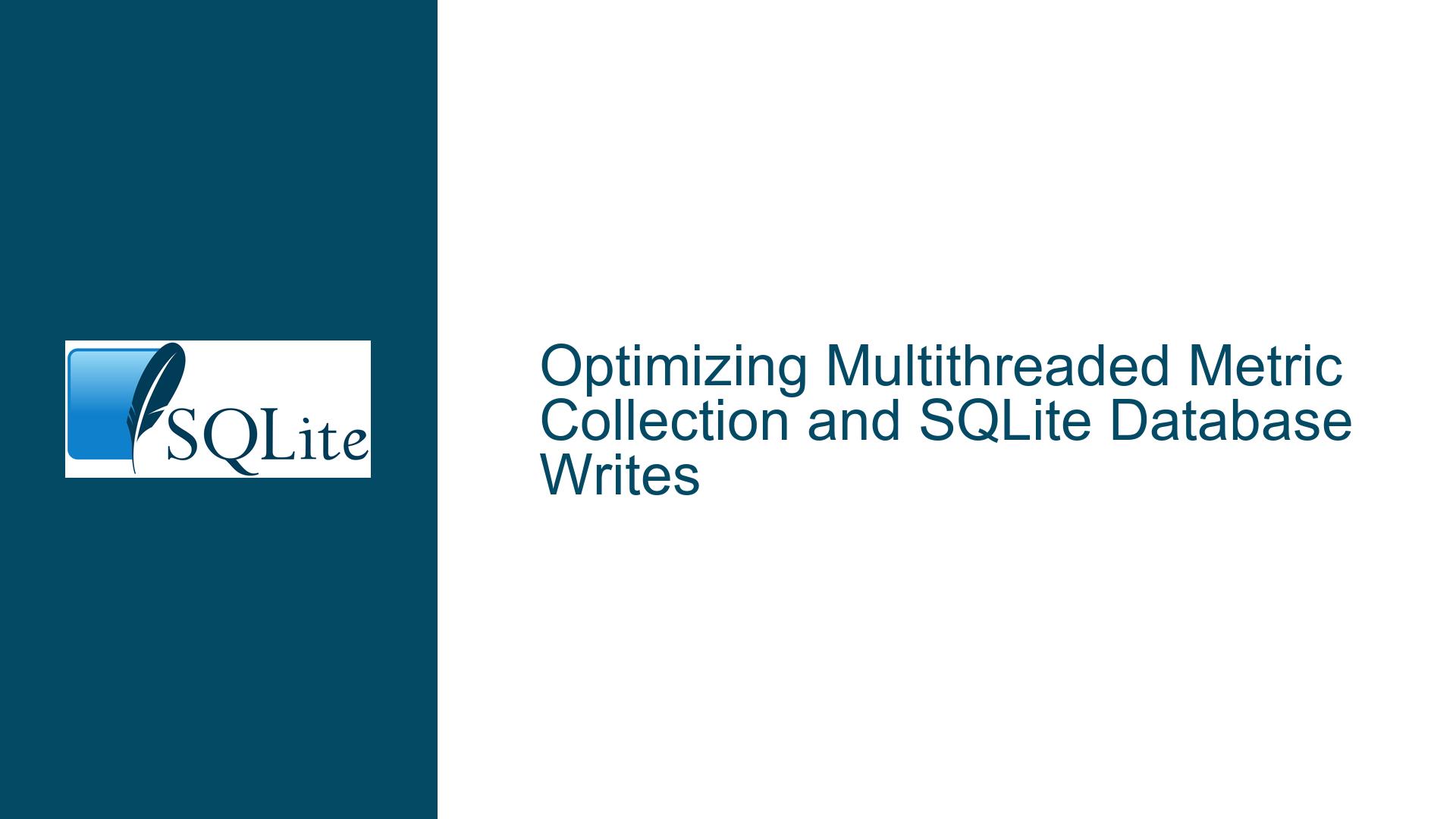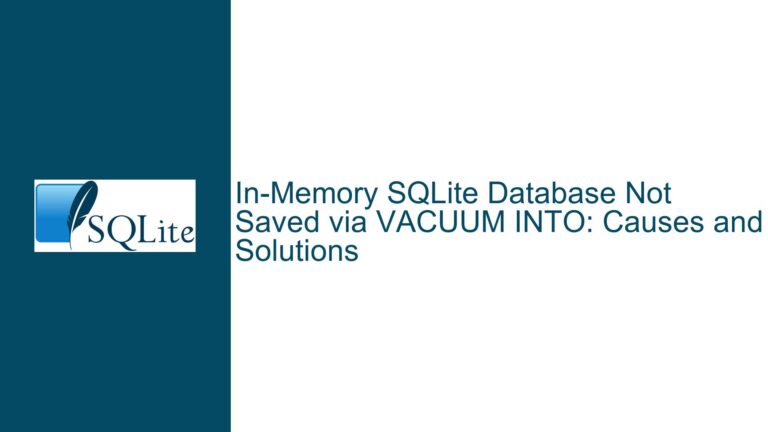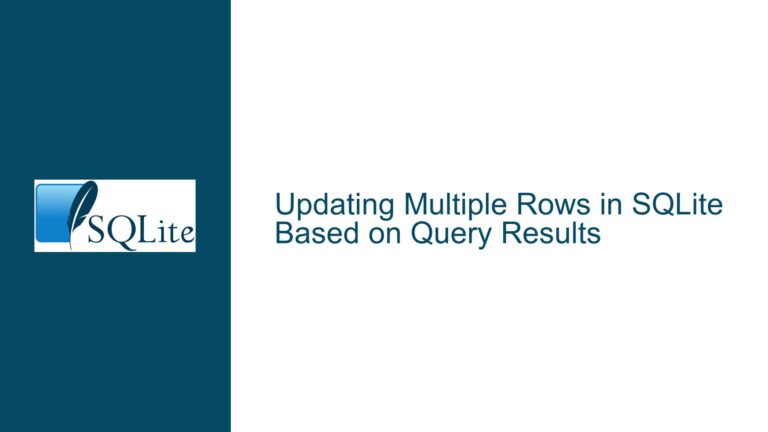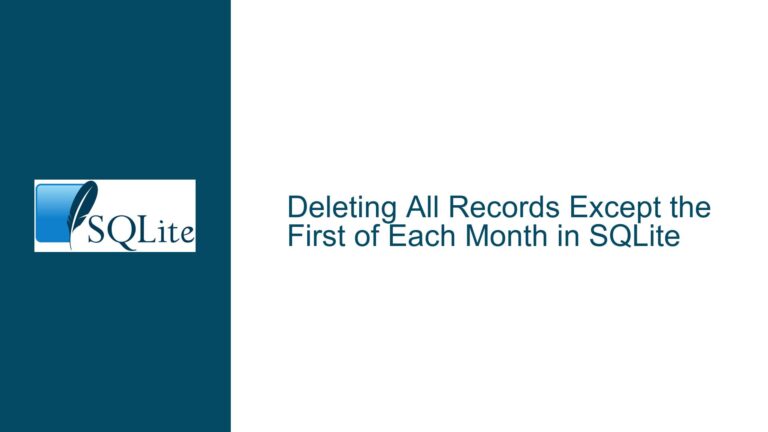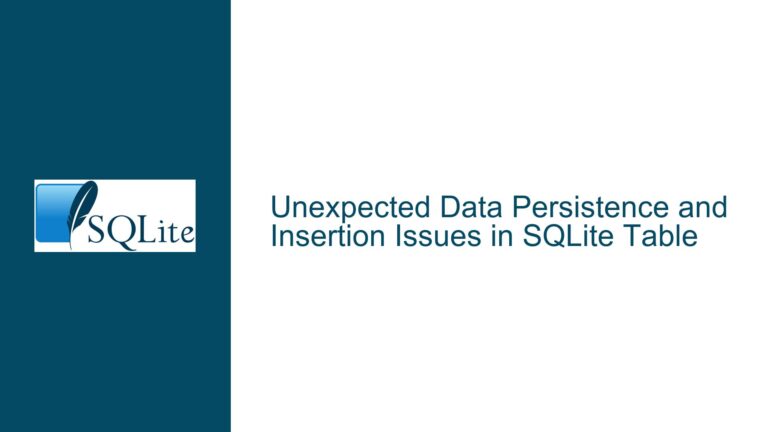Optimizing Multithreaded Metric Collection and SQLite Database Writes
Multithreaded Metric Collection and SQLite Database Write Challenges
When designing a system to collect metrics such as CPU, memory, and UFS usage in a multithreaded environment, one of the primary challenges is efficiently writing the collected data to an SQLite database. The system described involves multiple worker threads, each responsible for collecting and processing specific metrics, and a main thread that coordinates the flushing of data from memory to a persistent database on the filesystem. The core issue revolves around determining the optimal approach for handling concurrent database writes, ensuring data integrity, and minimizing performance bottlenecks.
The discussion highlights several approaches, each with its own set of trade-offs. The first approach involves each worker thread maintaining its own in-memory SQLite database instance, with the main thread coordinating the flushing of data to the filesystem. The second approach suggests sharing a single in-memory SQLite database instance across all worker threads, with the main thread handling the flushing. A third approach proposes using a concurrent queue to decouple the data collection from the database writes, while a fourth approach recommends using SQLite’s Write-Ahead Logging (WAL) mode with separate databases for each thread. Each of these approaches has implications for concurrency, performance, and complexity.
Concurrency and Performance Implications of Different Approaches
The choice of approach has significant implications for both concurrency and performance. In the first approach, where each worker thread maintains its own in-memory SQLite database, the primary advantage is that writes are independent and concurrent. However, this approach requires that the main thread block all worker threads during the flushing process, which could lead to performance bottlenecks, especially if the flushing operation is time-consuming. Additionally, maintaining multiple in-memory databases increases memory usage, which could be a concern in resource-constrained environments.
The second approach, which involves sharing a single in-memory SQLite database across all worker threads, introduces a different set of challenges. While this approach reduces memory usage by maintaining only one in-memory database, it requires careful handling of concurrent writes to avoid data corruption. SQLite, by default, uses a global mutex to serialize writes, which means that all worker threads would be forced to wait on this mutex whenever they need to write data. This could lead to significant performance degradation, especially if the number of worker threads is high or if the writes are frequent.
The third approach, which involves using a concurrent queue to decouple data collection from database writes, offers a potential solution to the concurrency issues. In this approach, each worker thread enqueues the collected data into a concurrent queue, and the main thread dequeues the data and writes it to the database. This approach allows the worker threads to continue collecting data without being blocked by the database writes, improving overall system performance. However, this approach requires additional memory to store the data in the queue, and the complexity of managing the queue adds to the overall system complexity.
The fourth approach, which involves using SQLite’s WAL mode with separate databases for each thread, offers a balance between concurrency and performance. In this approach, each worker thread writes to its own SQLite database in WAL mode, with the main thread periodically performing checkpointing to flush the data to the filesystem. WAL mode allows concurrent reads and writes, reducing the contention on the database. However, this approach requires that each thread maintains its own database, which could lead to increased storage requirements and complexity in managing multiple databases.
Detailed Troubleshooting Steps, Solutions, and Fixes
To address the challenges outlined above, it is essential to carefully evaluate each approach and consider the specific requirements of the system. The following steps provide a detailed guide to troubleshooting and resolving the issues related to multithreaded metric collection and SQLite database writes.
Step 1: Evaluate the Concurrency Requirements
The first step in troubleshooting is to evaluate the concurrency requirements of the system. This involves determining the number of worker threads, the frequency of data collection, and the volume of data being collected. If the system has a high number of worker threads or if the data collection frequency is high, the concurrency requirements will be more stringent, and approaches that minimize contention on the database will be preferred.
Step 2: Assess the Memory and Storage Constraints
The next step is to assess the memory and storage constraints of the system. Approaches that involve maintaining multiple in-memory databases or using concurrent queues will have higher memory requirements. If the system is running in a resource-constrained environment, these approaches may not be feasible. In such cases, approaches that minimize memory usage, such as sharing a single in-memory database or using WAL mode with separate databases, may be more suitable.
Step 3: Consider the Complexity of Implementation
The complexity of implementation is another important factor to consider. Approaches that involve managing multiple databases or using concurrent queues will require more complex code and may introduce additional points of failure. It is essential to weigh the benefits of improved concurrency and performance against the increased complexity and potential for bugs.
Step 4: Test and Benchmark Each Approach
Once the concurrency requirements, memory and storage constraints, and implementation complexity have been evaluated, the next step is to test and benchmark each approach. This involves setting up a test environment that simulates the production environment as closely as possible and running each approach under different load conditions. The performance of each approach should be measured in terms of throughput, latency, and resource usage. This will provide valuable insights into which approach is best suited to the specific requirements of the system.
Step 5: Optimize the Chosen Approach
After selecting the most suitable approach based on the evaluation and benchmarking, the final step is to optimize the chosen approach. This may involve fine-tuning the configuration of the SQLite database, such as adjusting the WAL mode settings or optimizing the checkpointing process. Additionally, it may be necessary to optimize the code that handles the data collection and database writes to minimize overhead and improve performance.
Step 6: Monitor and Iterate
Once the system is in production, it is essential to continuously monitor its performance and make iterative improvements as needed. This involves collecting performance metrics, identifying bottlenecks, and making adjustments to the system configuration or code as necessary. Continuous monitoring and iteration will help ensure that the system remains performant and reliable over time.
Conclusion
In conclusion, optimizing multithreaded metric collection and SQLite database writes requires a careful evaluation of the concurrency requirements, memory and storage constraints, and implementation complexity. By following the detailed troubleshooting steps outlined above, it is possible to identify the most suitable approach for a given system and optimize it for performance and reliability. Whether using multiple in-memory databases, sharing a single database, employing concurrent queues, or leveraging SQLite’s WAL mode, each approach has its own set of trade-offs that must be carefully considered. Ultimately, the goal is to achieve a balance between concurrency, performance, and complexity that meets the specific needs of the system.
